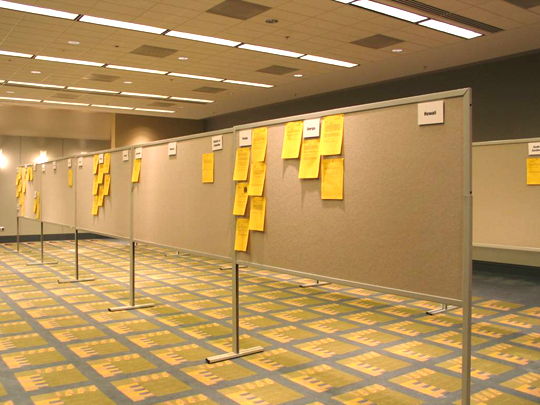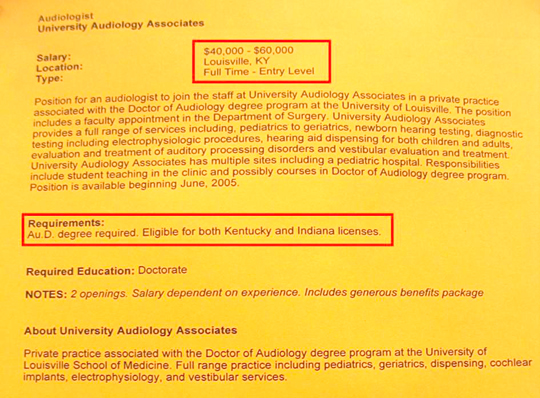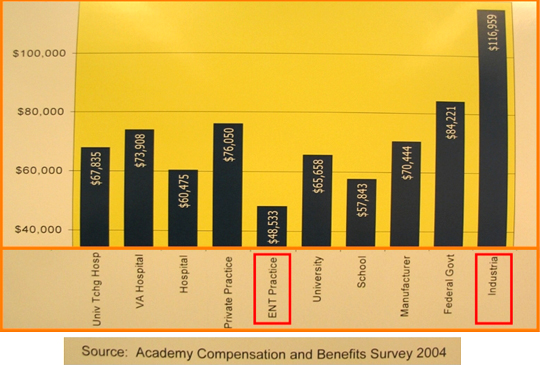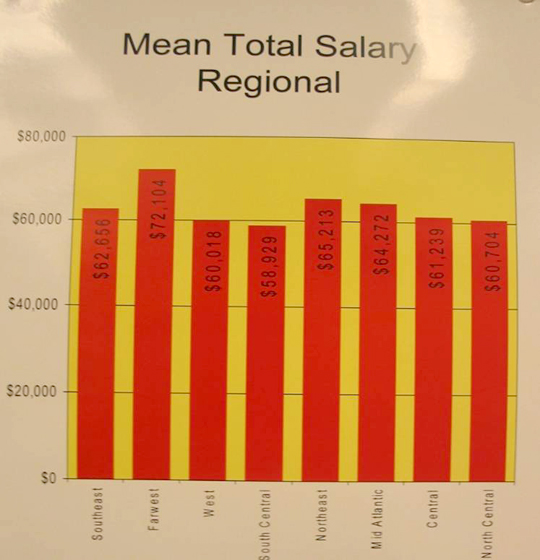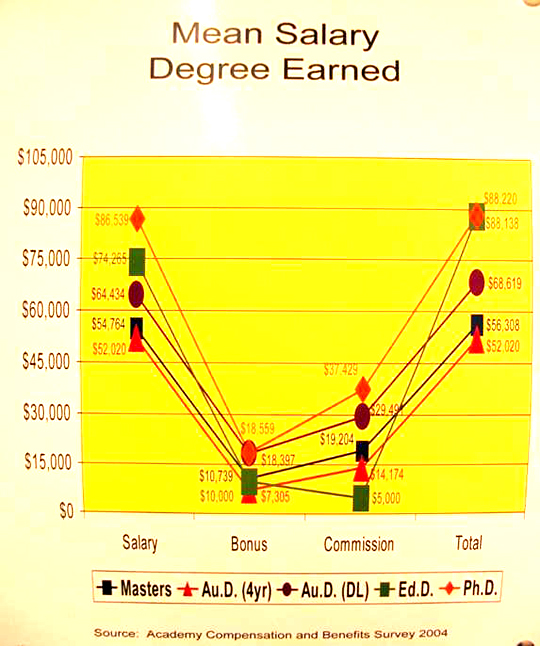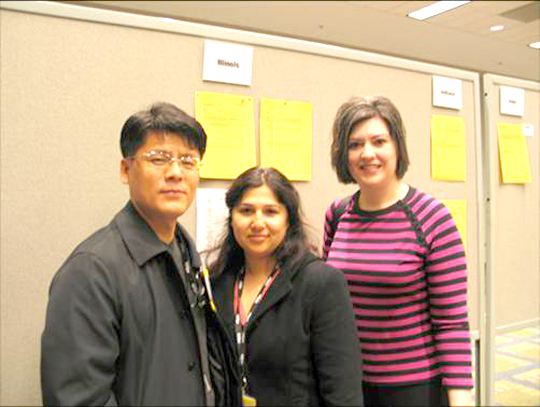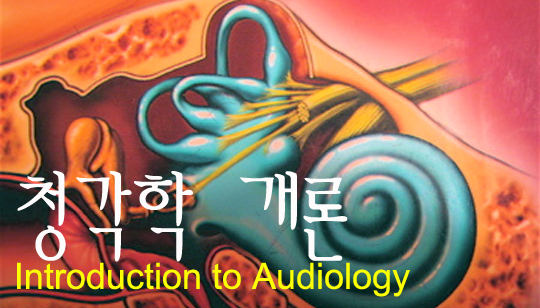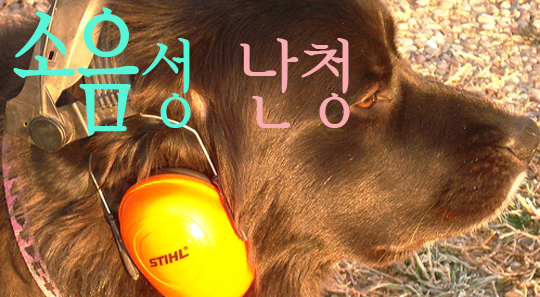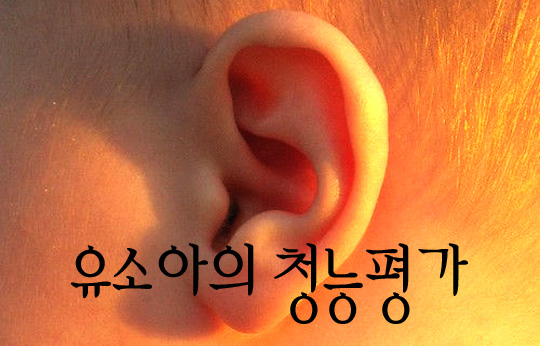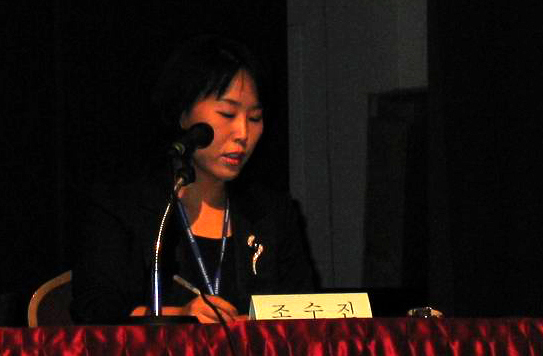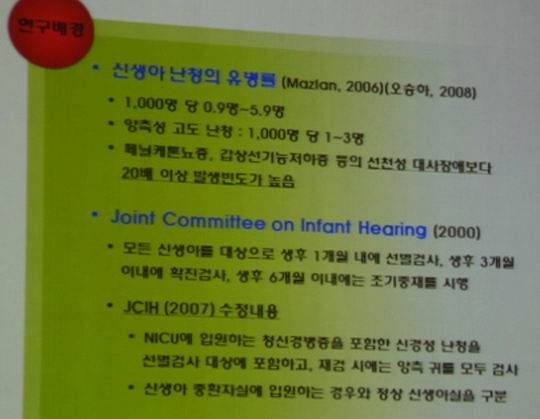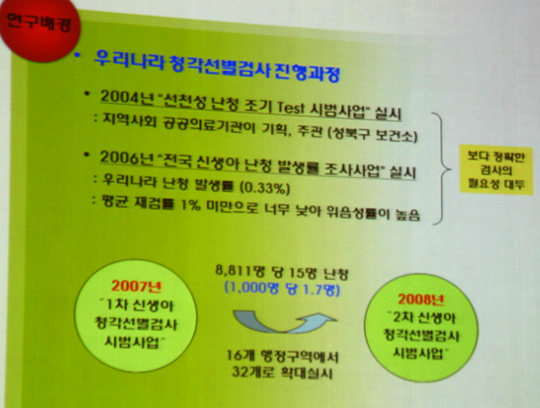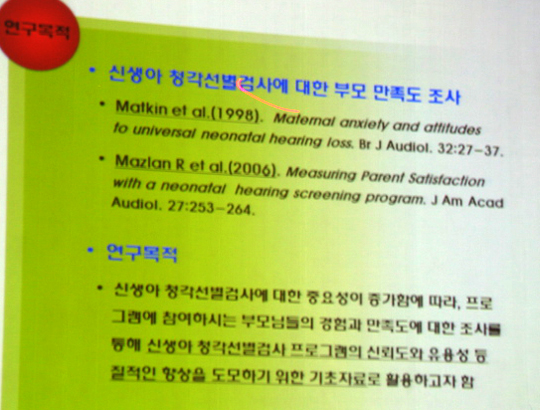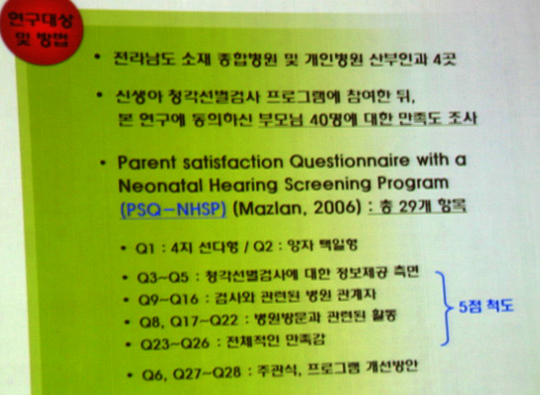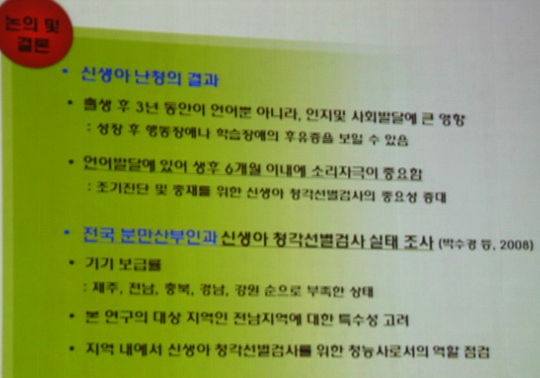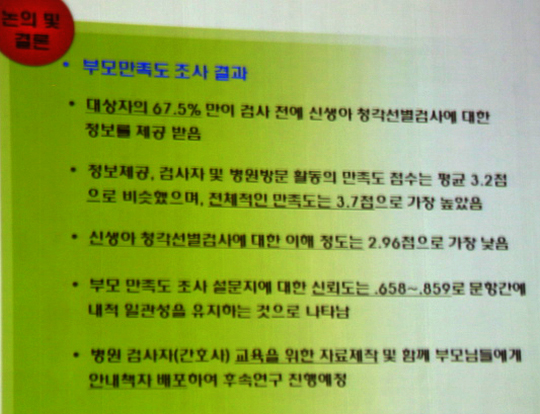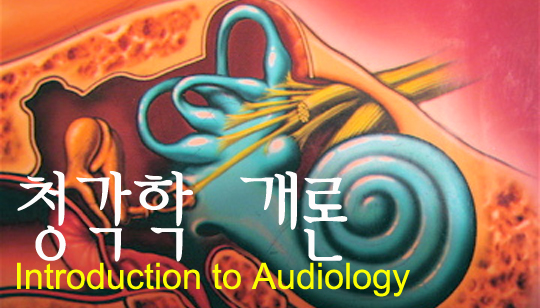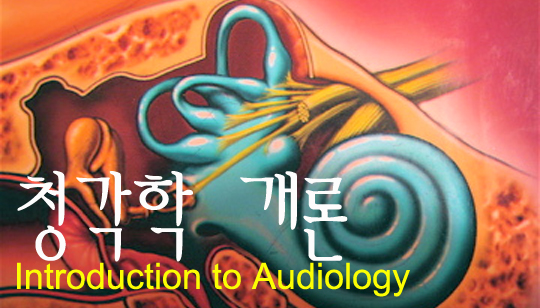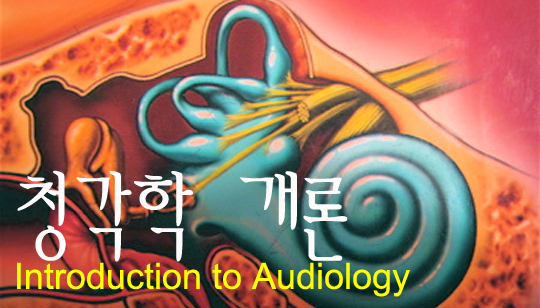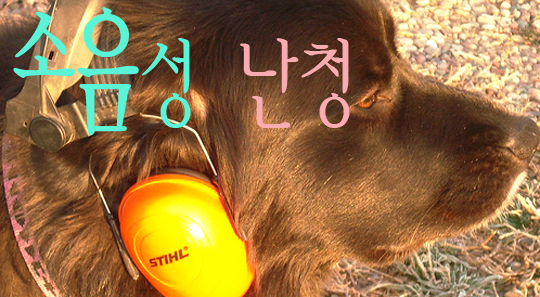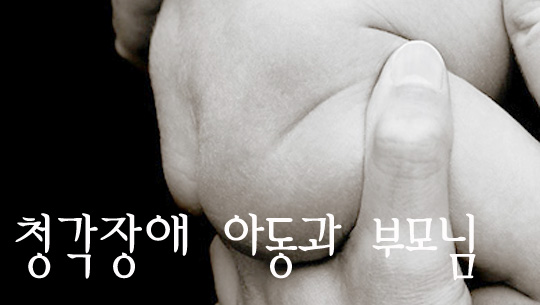
아래 내용은 http://www.entnet.org/HealthInformation/Childscreening.cfm에서 발췌하였습니다.

Signs Of Hearing Loss In Children
Hearing loss can also occur later childhood, after a newborn leaves the hospital. In these cases, parents, grandparents, and other caregivers are often the first to notice that something may be wrong with a young child’s hearing. Even if your child’s hearing was tested as a newborn, you should continue to watch for signs of hearing loss including:
- Not reacting in any way to unexpected loud noises,
갑작스러운 큰소리에 어떠한 반응도 않는 경우 - Not being awakened by loud noises,
큰 소리에 놀라지 않는 경우 - Not turning his/her head in the direction of your voice,
당신 목소리의 방향으로 머리를 돌리지 않는 경우 - Not being able to follow or understand directions,
지시를 따르지않거나 이해를 못하는 경우 - Poor language development, or
언어발달이 저조한 경우 - Speaking loudly or not using age-appropriate language skills.
말을 크게 하거나 나이에 맞는 적절한 언어 사용않는 경우
If your child exhibits any of these signs, report them to your doctor.
그리고 아래 그림은 Pediatrix Medical Group에서 제작한 카다로그의 'Your Baby's Hearing Checklist'에서 찍은 이미지입니다.
생후부터 24개월까지의 행동, 언어-청각적인 특성을 간단하게 정리한 자료입니다.
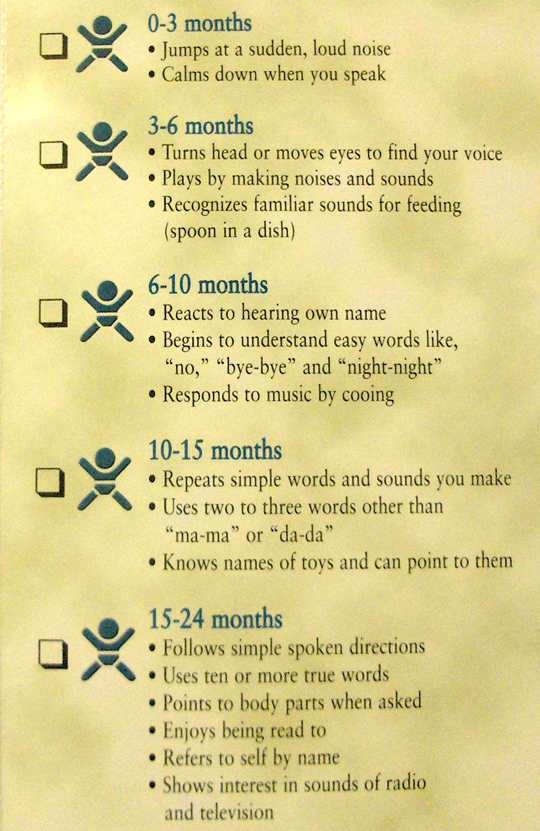
이상의 자료를 참조하시어 귀하의 자녀가 나이(연령, 월령)에 맞지않는 이상 특성을 보인다면 즉시 가까운 이비인후과 의사와 정밀한 상담을 받아보시길 바랍니다.

'청각학 이야기 > 유소아 난청' 카테고리의 다른 글
| 유소아 난청환자의 출현율(빈도)은 얼마나 될까? (0) | 2008.10.24 |
|---|---|
| 신생아 난청 고위험군에 대한 청각선별검사 기준 (0) | 2008.10.24 |
| 학령기 이전의 난청 아동(소아)의 경우 보청기 선택 방법 (0) | 2008.10.05 |
| 청각장애(난청) 자녀를 가진 부모님의 아이 키우는 방법 (0) | 2008.09.26 |
| 청각장애(난청) 아동을 가진 부모님의 단계별 심리 비교 (0) | 2008.09.26 |
